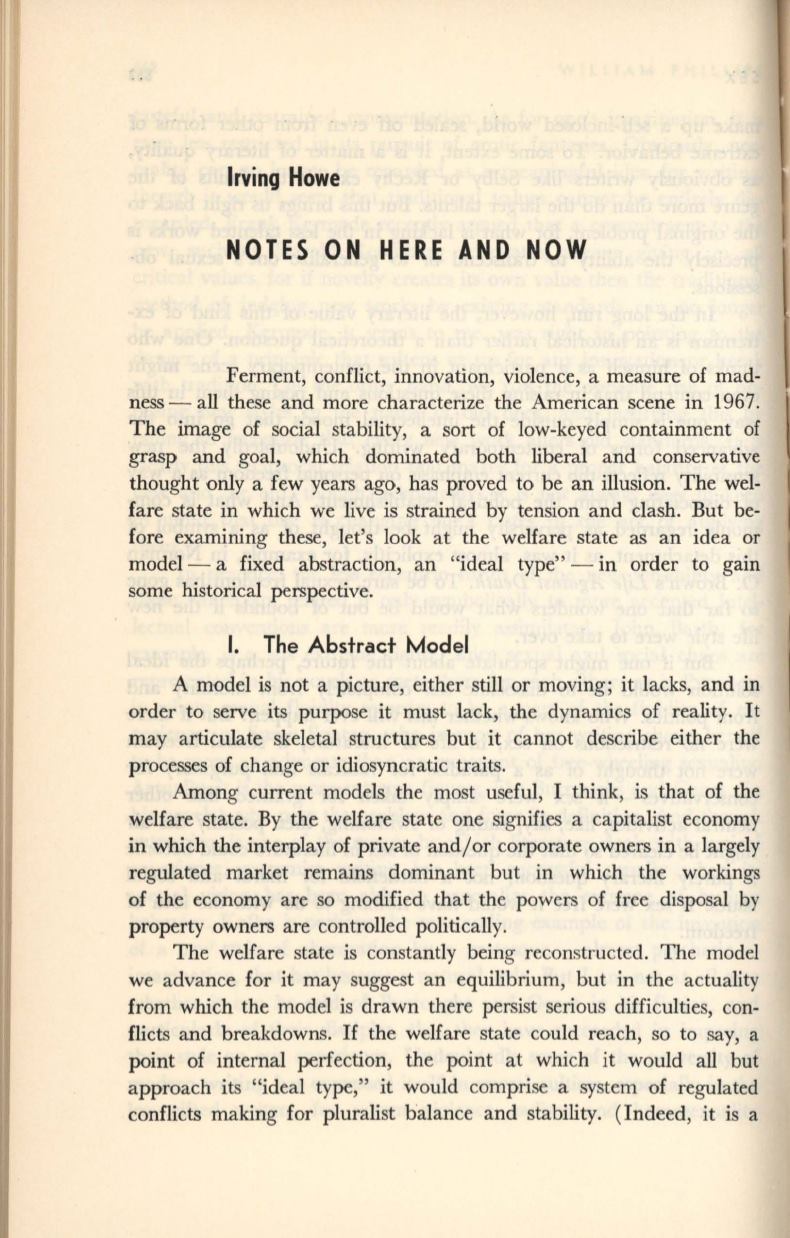
Irving Howe
NOTES ON HERE AND NOW
Ferment, conflict, innovation, violence, a measure of mad–
ness - all these and more characterize the American scene in 1967.
The image of social stability, a sort of low-keyed containment of
grasp and goal, which dominated both liberal and conservative
thought only a few years ago, has proved to be an illusion. The wel–
fare state in which we live is strained by tension and clash. But be–
fore examining these, let's look at the welfare state as an idea or
model - a fixed abstraction, an "ideal type" - in order to gain
some historical perspective.
I.
The Abstract Model
A model is not a picture, either still or moving; it lacks, and in
order to serve its purpose it must lack, the dynamics of reality. It
may articulate skeletal structures but it cannot describe either the
processes of change or idiosyncratic traits.
Among current models the most useful, I think, is that of the
welfare state. By the welfare state one signifies a capitalist economy
in which the interplay of private and/or corporate owners in a largely
regulated market remains dominant but in which the workings
of the economy are so modified that the powers of free disposal by
property owners are controlled politically.
The welfare state is constantly being reconstructed. The model
we advance for it may suggest an equilibrium, but in the actuality
from which the model is drawn there persist serious difficulties, con–
flicts and breakdowns.
If
the welfare state could reach, so to say, a
point of internal perfection, the point at which it would
all
but
approach its "ideal type," it would comprise a system of regulated
conflicts making for pluralist balance and stability. (Indeed, it is a


